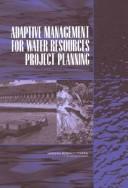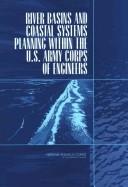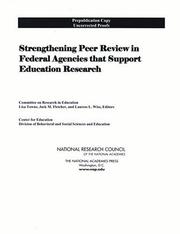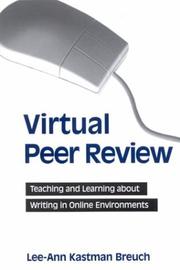| Listing 1 - 10 of 20 | << page >> |
Sort by
|
Book
ISBN: 9780415809306 9780415809313 9780203097076 9781136220906 9781136220944 9781136220951 Year: 2013 Publisher: Abingdon : Routledge
Abstract | Keywords | Export | Availability | Bookmark
 Loading...
Loading...Choose an application
- Reference Manager
- EndNote
- RefWorks (Direct export to RefWorks)
Mass communications --- Journalism --- Peer review. --- Manuscript preparation (Authorship) --- Publishers and publishing. --- Authorship --- Vocational guidance. --- Manuscript preparation --- Peer review --- Publishers and publishing --- Book publishing --- Books --- Book industries and trade --- Booksellers and bookselling --- Peer evaluation --- Peer rating --- Review, Peer --- Professional employees --- 360-degree feedback (Rating of employees) --- Writing (Authorship) --- Literature --- Publicity --- Fake news --- Authorship&delete& --- Vocational guidance --- Publishing --- Rating of
Book
ISBN: 9789814579162 9814579165 Year: 2014 Publisher: Singapore : World Scientific ,
Abstract | Keywords | Export | Availability | Bookmark
 Loading...
Loading...Choose an application
- Reference Manager
- EndNote
- RefWorks (Direct export to RefWorks)
Given the explosion of information and knowledge in the field of Life Sciences, adapting primary literature as materials in course work as part of active learning seems to be more effective in improving scientific literacy among science undergraduates than the pure transmission of content knowledge using traditional textbooks. In addition, students also read research articles as part of undertaking laboratory research projects useful for preparing them for graduate school. As such, a good grasp of reading and analytical skills is needed for students to understand how their research project contributes to the field that they are working in. Such skills are being taught at UK and USA universities. In Asia, this approach in teaching has not yet been as widespread, although similar ideas are beginning to be used in education. Written as a quick guide for undergraduate students and faculty members dealing with scientific research articles as part of a module or research project, this book will be useful, especially in Asia, for students and faculty members as the universities look to incorporating the use of scientific research articles in their undergraduate teaching. For Life Science students, the first time they encounter a primary literature can be rather daunting, though with proper guidance, they can overcome the initial difficulties and become confident in dealing with scientific articles. This guidebook provides a structured approach to reading a research article, guiding the reader step-by-step through each section, with tips on how to look out for key points and how to evaluate each section. Overall, by helping undergraduate students to overcome their anxieties in reading scientific literature, the book will enable the students to appreciate better the process of scientific investigations and how knowledge is derived in science.
02 --- Critics --- Peer review --- Research --- Peer evaluation --- Peer rating --- Review, Peer --- Professional employees --- 360-degree feedback (Rating of employees) --- Science --- Science research --- Scientific research --- Information services --- Learning and scholarship --- Methodology --- Research teams --- Literary critics --- Criticism --- Litterateurs --- Study and teaching --- Rating of
Book
ISBN: 9463002898 946300288X 9463002871 Year: 2015 Publisher: Rotterdam : SensePublishers : Imprint: SensePublishers,
Abstract | Keywords | Export | Availability | Bookmark
 Loading...
Loading...Choose an application
- Reference Manager
- EndNote
- RefWorks (Direct export to RefWorks)
Teaching for Learning and Learning for Teaching focuses on the emerging global governmental and institutional agenda about higher education teaching quality and the role that peer review can play in supporting improvements in teaching and student outcomes. This agenda is a pervasive element of the further development of higher education internationally through activities of governments, global agencies, institutions of higher education, discrete disciplines, and individual teachers. Many universities have adopted student evaluations as a mechanism to appraise the quality of teaching. These evaluations can be understood as providing a “customer-centric” portrait of quality; and, when used as the sole arbiter of teaching performance they do not instil confidence in the system of evaluation by academic teaching staff. Providing peer perspectives as counterpoint, whether in a developmental or summative form, goes some way to alleviating this imbalance and is the impetus for the resurgence of interest in peer review and observation of teaching. This book seeks to recognise cases of peer review of teaching in Higher Education to affirm best practices and identify areas that require improvement in establishing local, national and international benchmarks of teaching quality.
Education - General --- Education --- Social Sciences --- College teachers --- Peer review. --- Rating of. --- Peer evaluation --- Peer rating --- Review, Peer --- Education. --- Education, general. --- Professional employees --- 360-degree feedback (Rating of employees) --- Rating of --- Children --- Education, Primitive --- Education of children --- Human resource development --- Instruction --- Pedagogy --- Schooling --- Students --- Youth --- Civilization --- Learning and scholarship --- Mental discipline --- Schools --- Teaching --- Training
Book
ISBN: 9051890540 Year: 1990 Publisher: Utrecht Lemma
Abstract | Keywords | Export | Availability | Bookmark
 Loading...
Loading...Choose an application
- Reference Manager
- EndNote
- RefWorks (Direct export to RefWorks)
College teachers --- Peer review --- Academicians --- Academics (Persons) --- College instructors --- College lecturers --- College professors --- College science teachers --- Lectors (Higher education) --- Lecturers, College --- Lecturers, University --- Professors --- Universities and colleges --- University academics --- University instructors --- University lecturers --- University professors --- University teachers --- Peer evaluation --- Peer rating --- Review, Peer --- Rating of&delete& --- Congresses --- Teachers --- Higher education --- Great Britain --- Netherlands --- Professional employees --- 360-degree feedback (Rating of employees) --- Rating of --- Faculty

ISBN: 1280176261 9786610176267 0309531284 9780309531283 0309091829 9780309091824 0309166187 Year: 2004 Publisher: Washington, D.C. : ©2004 National Academies Press,
Abstract | Keywords | Export | Availability | Bookmark
 Loading...
Loading...Choose an application
- Reference Manager
- EndNote
- RefWorks (Direct export to RefWorks)
Water resources development --- Peer review. --- Peer evaluation --- Peer rating --- Review, Peer --- Professional employees --- 360-degree feedback (Rating of employees) --- Energy development --- Natural resources --- Water-supply --- Planning. --- Research --- Rating of --- United States. --- COE --- Corps of Engineers (U.S.) --- U.S. Army Corps of Engineers --- U.S. Army Engineers --- U.S.E.D. --- US Army Corps of Engineers --- USACE --- USED --- U.S. Army Engineer Department

ISBN: 1280176202 9786610176205 0309531527 9780309531528 0309091918 9780309091916 9781280176203 6610176205 0309166195 Year: 2004 Publisher: Washington, D.C. : ©2004 National Research Council,
Abstract | Keywords | Export | Availability | Bookmark
 Loading...
Loading...Choose an application
- Reference Manager
- EndNote
- RefWorks (Direct export to RefWorks)
Water resources development --- Peer review. --- Peer evaluation --- Peer rating --- Review, Peer --- Professional employees --- 360-degree feedback (Rating of employees) --- Energy development --- Natural resources --- Water-supply --- Planning. --- Research --- Rating of --- United States. --- COE --- Corps of Engineers (U.S.) --- U.S. Army Corps of Engineers --- U.S. Army Engineers --- U.S.E.D. --- US Army Corps of Engineers --- USACE --- USED --- U.S. Army Engineer Department

ISBN: 1280176113 9786610176113 0309532361 9780309532365 0309092205 9780309092203 0309166217 Year: 2004 Publisher: Washington, D.C. : ©2004 National Academies Press,
Abstract | Keywords | Export | Availability | Bookmark
 Loading...
Loading...Choose an application
- Reference Manager
- EndNote
- RefWorks (Direct export to RefWorks)
Water resources development --- Peer review. --- Peer evaluation --- Peer rating --- Review, Peer --- Professional employees --- 360-degree feedback (Rating of employees) --- Energy development --- Natural resources --- Water-supply --- Planning. --- Research --- Rating of --- United States. --- COE --- Corps of Engineers (U.S.) --- U.S. Army Corps of Engineers --- U.S. Army Engineers --- U.S.E.D. --- US Army Corps of Engineers --- USACE --- USED --- U.S. Army Engineer Department

ISBN: 1280176687 9786610176687 0309528143 0309090997 9780309090995 9780309528146 0309165849 Year: 2004 Publisher: Washington, D.C. National Academies Press
Abstract | Keywords | Export | Availability | Bookmark
 Loading...
Loading...Choose an application
- Reference Manager
- EndNote
- RefWorks (Direct export to RefWorks)
Research --- Peer review. --- Peer review --- Administrative agencies --- Science --- Science research --- Scientific research --- Information services --- Learning and scholarship --- Methodology --- Research teams --- Agencies, Administrative --- Executive agencies --- Government agencies --- Regulatory agencies --- Administrative law --- Public administration --- Peer evaluation --- Peer rating --- Review, Peer --- Professional employees --- 360-degree feedback (Rating of employees) --- Evaluation. --- Government policy --- Law and legislation --- Rating of

ISBN: 0791485242 1423739477 9781423739470 0791460495 9780791460498 9780791460504 0791460509 9780791485248 0791460509 Year: 2004 Publisher: Albany : State University of New York Press,
Abstract | Keywords | Export | Availability | Bookmark
 Loading...
Loading...Choose an application
- Reference Manager
- EndNote
- RefWorks (Direct export to RefWorks)
In a reassessment of peer review practices, Lee-Ann Kastman Breuch explores how computer technology changes our understanding of this activity. She defines "virtual peer review" as the use of computer technology to exchange and respond to one another's writing in order to improve it. Arguing that peer review goes through a remediation when conducted in virtual environments, the author suggests that virtual peer review highlights a unique intersection of social theories of language and technological literacy.
Peer review. --- Online data processing. --- Report writing --- English language --- Peer evaluation --- Peer rating --- Review, Peer --- Professional employees --- 360-degree feedback (Rating of employees) --- In-line data processing --- On-line data processing --- Electronic data processing --- Teleprocessing monitors (Computer programs) --- Time-sharing computer systems --- Germanic languages --- Computer-assisted instruction. --- Study and teaching --- Data processing. --- Rhetoric --- Composition and exercises --- Rating of
Book
ISBN: 110878352X 110874270X 1108788688 1108787223 Year: 2021 Publisher: Cambridge : Cambridge University Press,
Abstract | Keywords | Export | Availability | Bookmark
 Loading...
Loading...Choose an application
- Reference Manager
- EndNote
- RefWorks (Direct export to RefWorks)
This Element describes for the first time the database of peer review reports at PLOS ONE, the largest scientific journal in the world, to which the authors had unique access. Specifically, this Element presents the background contexts and histories of peer review, the data-handling sensitivities of this type of research, the typical properties of reports in the journal to which the authors had access, a taxonomy of the reports, and their sentiment arcs. This unique work thereby yields a compelling and unprecedented set of insights into the evolving state of peer review in the twenty-first century, at a crucial political moment for the transformation of science. It also, though, presents a study in radicalism and the ways in which PLOS's vision for science can be said to have effected change in the ultra-conservative contemporary university. This title is also available as Open Access on Cambridge Core.
Research --- Peer review. --- Periodicals --- Scholarly publishing. --- Academic writing --- Evaluation. --- Publishing. --- Learned writing --- Scholarly writing --- Authorship --- Academic publishing --- Publishers and publishing --- Journal publishing --- Magazine publishing --- Periodical publishing --- Periodicals, Publishing of --- Peer evaluation --- Peer rating --- Review, Peer --- Professional employees --- 360-degree feedback (Rating of employees) --- Rating of --- publishing --- literature
| Listing 1 - 10 of 20 | << page >> |
Sort by
|

 Search
Search Feedback
Feedback About UniCat
About UniCat  Help
Help News
News